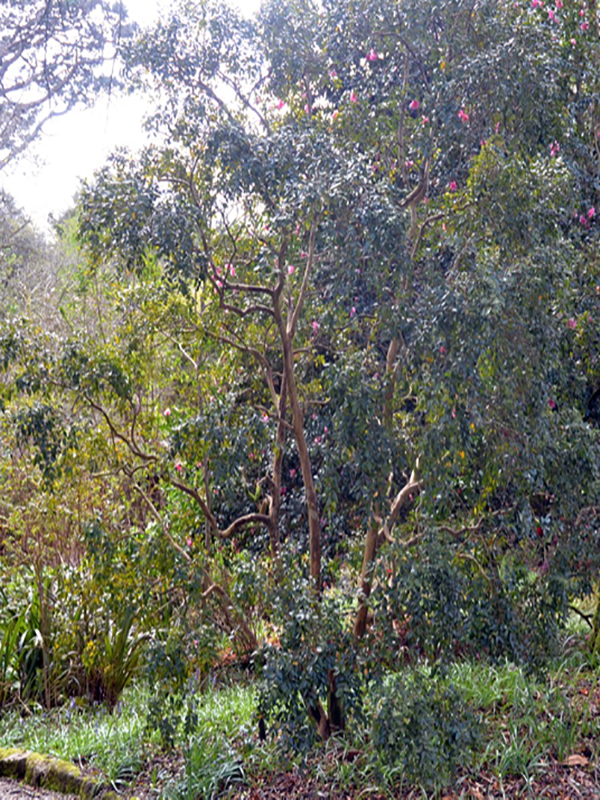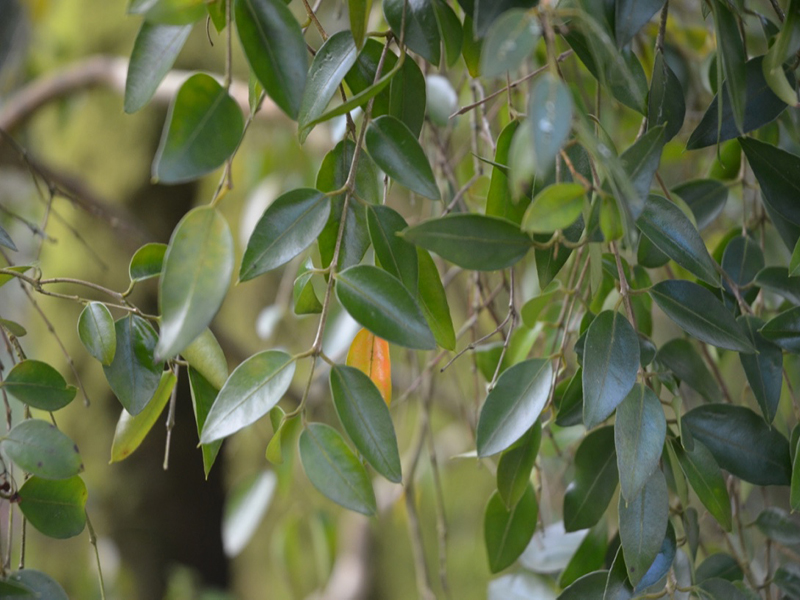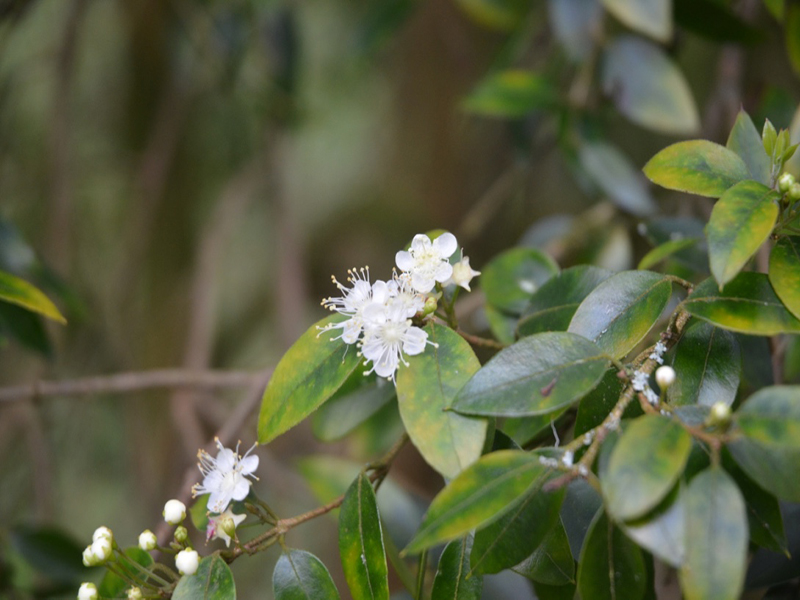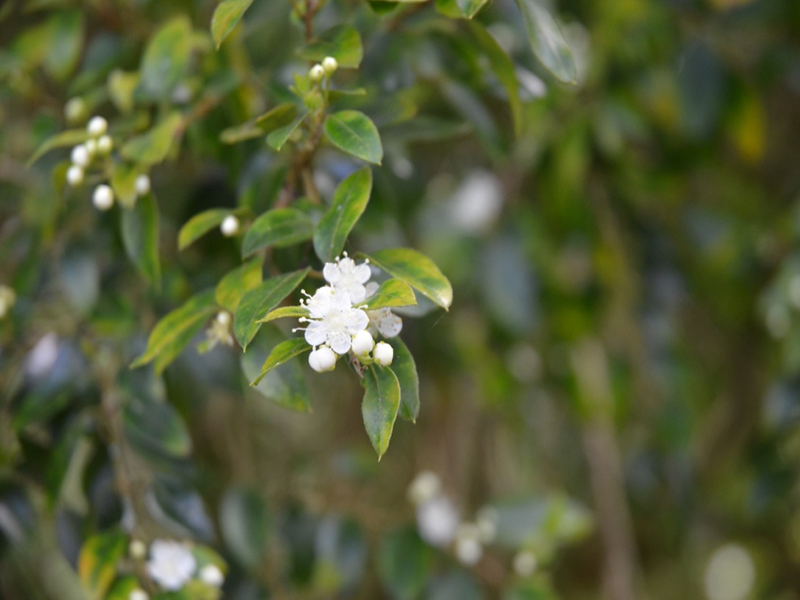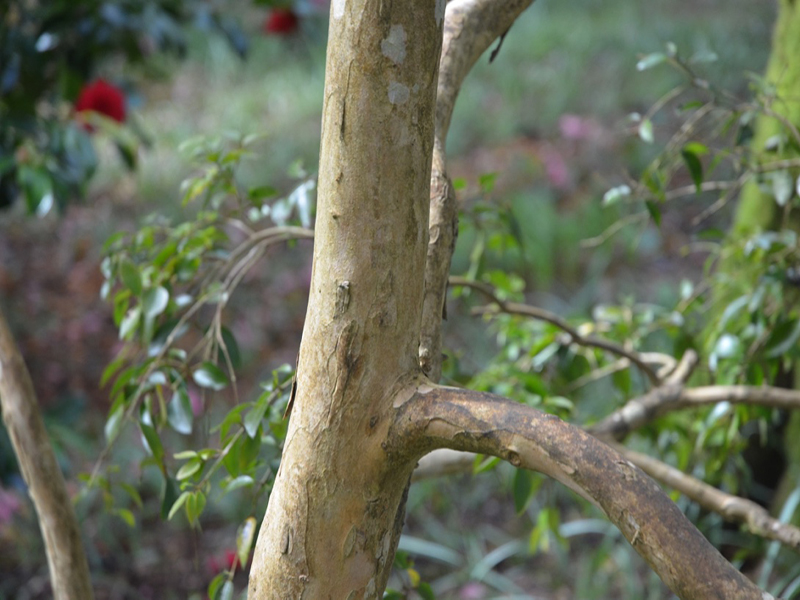
Tropicals, Woody > Myrtus > Myrtus lechleriana > Myrtus lechleriana
Myrtus lechleriana
Chilean Myrtle
Origin: Native to Chile and Argentina.
| Family |
| Myrtaceae |
| Genus |
| Myrtus |
| Species |
| lechleriana |
| Category |
| Tropicals, Woody |
| Type |
| Tree (evergreen), Shrub (evergreen) |
| USDA Hardiness Zone |
| 8 - 10 |
| Canadian Hardiness Zone |
| Requires cold season protection under glass. |
| RHS Hardiness Zone |
| H2 - H5 |
| Temperature (°C) |
| -12- 4 |
| Temperature (°F) |
| 10 - 40 |
| Height |
| 4-8 metres |
| Spread |
| 2.5-4 metres |
Photographs
Description and Growing Information
Flowering Period
| General Description |
| A large shrub or multi-stemmed tree with attractive, flaking bark and aromatic, evergreen foliage. |
| Landscape |
| A low maintenance ornamental shrub or small tree, it can be used as an informal hedge. |
| Cultivation |
| Grow in moderately fertile, moist but well-drained soil in a sunny position sheltered from cold, drying wind. |
| Shape |
| A dense shrub or tree that can easily be trained to different forms. |
| Growth |
| Medium |
| ID Characteristic |
| A sturdy ornamental shrub, blooms are white in the summer and produces edible berries in autumn. |
| Pests |
| Generally pest and disease free. |
| Habitat |
| Rainforests, near streams, and in other moist sites. |
| Bark/Stem Description |
| A multi-stemmed plant. |
| Flower/Leaf Bud Description |
| The buds are small and insignificant. |
| Leaf Description |
| Leaves are elliptical or ovate, up to 5 cm long. |
| Flower Description |
| Clusters of small, fragrant, five-petalled flowers with long stamens. |
| Fruit Description |
| Edible, aromatic berries, red at first turning black. |
| Colour Description |
| The bark is light brown or grey. Leaves are dark green. Flowers are white. When ripe, berries are purple to blue-black. |
| Notable Specimens |
| Trengwainton Garden, Madron, near Penzance, Cornwall, United Kingdom. |
| Propagation |
| By seed sown in containers in a cold frame in spring, or by semi-ripe cuttings rooted with gentle bottom heat in late summer. |
| Ethnobotanical Uses (Disclaimer) |
| Berries are edible and may be eaten raw, but are at best moderately tasteful. Dried flowers, leaves, fruits, and even the wood are used to flavour foods. |
